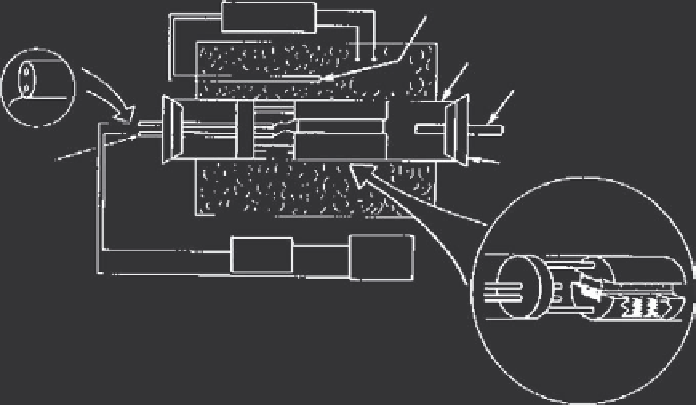Geoscience Reference
In-Depth Information
The thinning down of the quartz plate depends upon the frequency measure-
ments and can be expressed as:
H
1
K
ð
MHz
μ
Þ
F
ð
MHz
Þ
5
e
ðμ
m
Þ
where e is the plate thickness, K is a constant characteristic of the material and of
its orientation, and F is the resonance frequency.
Sweeping is one of the most popularly used techniques in recent years to
enhance the performance of quartz resonators. Sweeping or solid-state electrolysis
or electro-diffusion is generally performed under a vacuum, or air, or hydrogen, or
desired atmosphere
[55
57]
. During sweeping, the crystal is placed in an electric
field and heated.
Figure 5.14
shows the schematic diagram of the sweeping appara-
tus. Then, there is a migration of the impurities, and some modifications are
induced within the crystal. According to the parameters used by the manufacturer
during the sweeping process, and the quality of the as-grown crystals, the results
could be very different. Sweeping reduces the formation of etch tunnels. The effect
of sweeping is to remove lithium and sodium deposited interstitially during growth.
These ions are usually trapped along an angstrom-wide tunnel, which is parallel to
the Z-axis in the quartz crystal lattice. In an interstitial position they interact with
aluminum impurities substitutional in the lattice to form Al
Li centers, which
have shown to be weakly bonded and are the cause of low radiation tolerance in a
resonator. In the sweeping process, these are replaced by Al-OH or Al-hole centers,
which have a much higher radiation tolerance.
Thermocouple
Temperatures
controller
Quartz tube
Gas inlet
Furnace
Plug
Gas outlet
High-
voltage
supply
Micro
Ammeter
Figure 5.14 Schematic diagram of the sweeping apparatus
[57]
.



